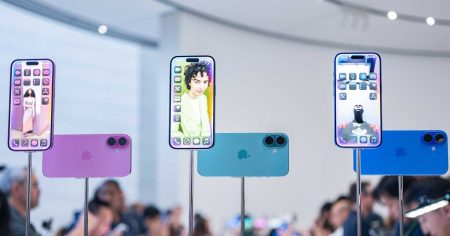After this, another model can map and decipher gestures from those points, assigning them to mouse inputs.
It’s an explicitly assistive implementation of AI, as opposed to those often touted as making human input redundant. Indeed, this is how Moroney suggests AI is best applied, to broaden “our capacity to do things that weren’t previously feasible.”
This sentiment extends beyond Gameface’s potential to make gaming more accessible. AI, Moroney suggests, can have a major impact on accessibility for players, but also on the way developers create accessibility solutions.
“Anything that lets developers be orders of magnitude more effective at solving classes of problems that were previously infeasible,” he says, “can only be beneficial in the accessibility, or any other, space.”
This is something developers are already beginning to understand. Artem Koblov, creative director of Perelesoq, tells WIRED that he wants to see “more resources directed toward solving routine tasks, rather than creative invention.”
Doing so allows AI to aid in time-consuming technical processes. With the right applications, AI could create a leaner, more permissive, development cycle in which it both helps in the mechanical implementation of accessibility solutions and leaves developers more time to consider them.
“As a developer, you want to have as many tools that can help you make your job easier,” says Conor Bradley, creative director of Soft Leaf Studios. He points to gains in current implementations of AI in accessibility, including “real-time text-to-speech and speech-to-text generation, and speech and image recognition.” And he sees potential for future developments. “In time, I can see more and more games making use of these powerful AI tools to make our games more accessible.”
Koblov believes it can go even further. He’d like to see AI training on specific patterns to create a basic, adaptable accessibility framework that could be injected into games. “Such framework would adapt the visual, audio, and interactive aspects of games,” he says. “In other words, smaller developers like us wouldn’t have to conduct expensive research, develop unique solutions, and go through numerous iterations of testing on their own.”
Bradley urges caution when pulling primacy away from human input. Asked whether AI could prove an aid or a distraction to existing accessibility efforts, he said he was optimistic about its potential, but stressed that AI is not a shortcut.
“You cannot say, ‘AI, make my game accessible!’ and hey presto, you now have the most accessible game of the year,” he says. “We need players, including those from disabled and neurodiverse communities, to test our games. At the end of the day, a human will be playing your game, not a machine.”
While Koblov believes AI could be valuable for implementing and testing accessibility features, he acknowledges that thinking about AI requires “an ‘addition’ mindset,” rather than a “replacement” approach.
But conflating the generative, content-driven tools that spark fears of human redundancy with the kind of AI implementations that help accessibility is, according to Moroney, “Really dangerous.” He continues, “If we’re going to be the adults in the room when it comes to AI, we have to recognize hype and bandwagons.”
This makes clarity and transparency about AI’s capabilities all the more important, especially in its relation to accessibility. It’s not a magic wand. “AI and machine learning were doing well until the recent releases,” Moroney says. “Now they’ve fallen back in the hype cycle.”
Read the full article here









